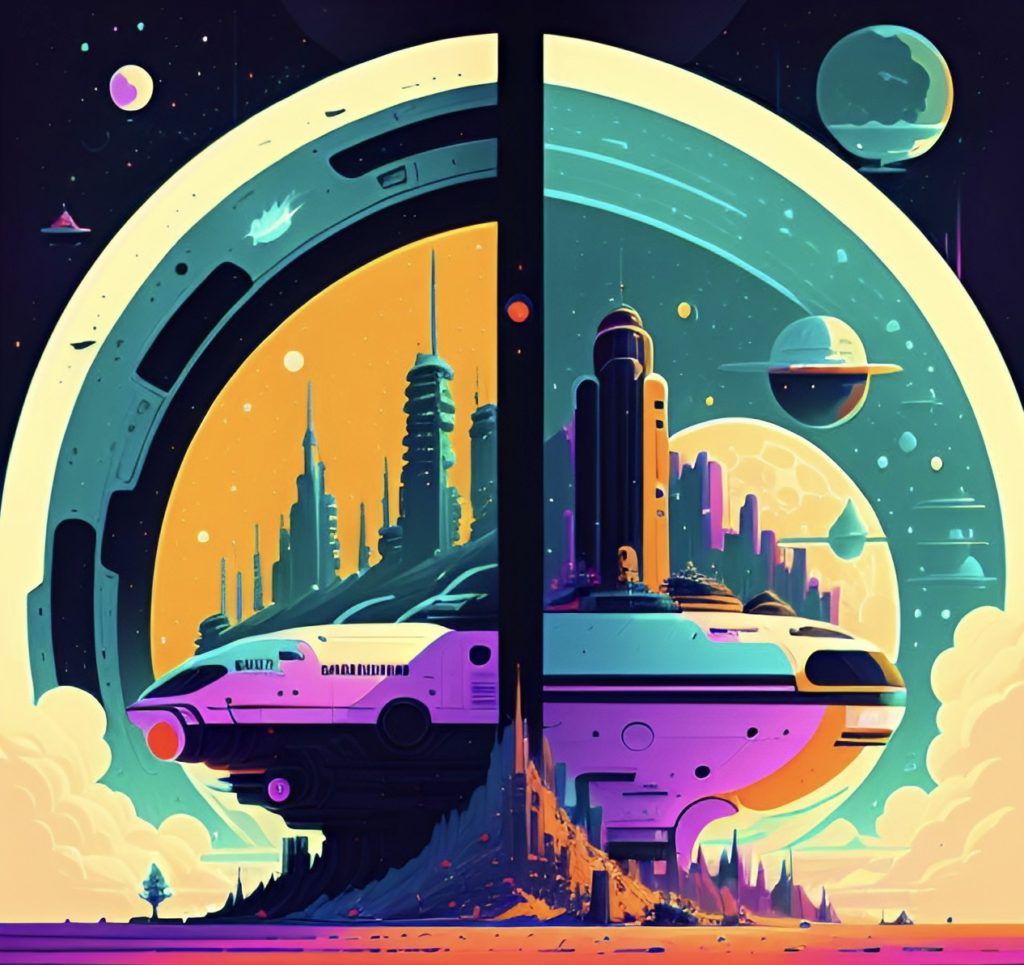
Title: The Dichotomy of Clean and Dirty Space Ships: Exploring Tastes in Sci-Fi
Introduction:
In the vast realm of science fiction, there exists a fascinating correlation between one’s preference for clean or dirty space ships and their overall taste in the genre. This essay delves into the dichotomy between clean and dirty space ships, examining how this distinction influences preferences in various subgenres and franchises within science fiction.
- Clean Space Ships: The Aesthetics of Order and Utopian Visions
Clean space ship enthusiasts gravitate towards narratives that embrace sleekness, order, and a utopian vision of the future. Works like “Solarpunk” and the writings of Isaac Asimov are often associated with this preference. These stories portray technologically advanced societies with tidy, pristine spacecraft that reflect a sense of efficiency, harmony, and progress. - Dirty Space Ships: Embracing Grit, Punk, and Alternative Realities
On the other side of the spectrum, dirty space ship aficionados are drawn to narratives that embrace grit, decay, and alternative realities. This inclination finds resonance in subgenres like cyberpunk, steampunk, and the writings of the “New Wave” movement. These narratives often feature worn-down and visually intricate spacecraft, reflecting a world where technology intertwines with the grime and complexities of society. - Golden Age Authors: The Clean-Dirty Spectrum
The preferences for clean or dirty space ships extend to the works of notable “Golden Age” authors, such as Robert A. Heinlein and Arthur C. Clarke. Heinlein’s writings often feature a gritty and practical approach to space exploration, aligning more closely with dirty space ship mentalities. On the other hand, Clarke’s works lean towards clean space ship mentalities, with an emphasis on pristine and advanced technologies. - Iconic Franchises: Star Wars and Star Trek
Iconic science fiction franchises, such as Star Wars and Star Trek, showcase the interplay between clean and dirty space ship mentalities. Star Wars, with its weathered spaceships and lived-in environments, embodies the aesthetics of dirty space ship narratives. However, its underlying themes of heroism, hope, and the battle between good and evil resonate with the ideals of clean space ship narratives. In contrast, Star Trek’s optimistic and orderly vision of the future, particularly in The Next Generation series, aligns more closely with clean space ship mentalities while exploring complex moral and philosophical themes. - Outer Edges: Psychedelia and Adventure Novels
The outer edges of the clean-dirty spectrum in science fiction can be observed in psychedelia and adventure novels. Psychedelic sci-fi pushes boundaries, embracing mind-bending concepts and surreal visuals, often associated with the dirty space ship mentality. Conversely, adventure novels lean towards clean space ship mentalities, emphasizing thrilling escapades in well-organized and purposeful settings.
Conclusion:
The debate between clean and dirty space ships in science fiction is not merely about aesthetics but serves as a reflection of one’s broader taste within the genre. Preferences for cleanliness or grittiness in spacecraft correlate with broader affinities for utopian or dystopian visions, order or rebellion, and explorations of societal complexity or a sense of harmony. This dichotomy underscores the diversity and richness within science fiction, providing readers and viewers with an array of narratives that cater to their unique tastes and sensibilities. Whether embracing the gleaming futures of clean space ships or the atmospheric grunge of dirty space ships, both mentalities contribute to the tapestry of the science fiction genre, offering immersive and captivating journeys into the unknown.